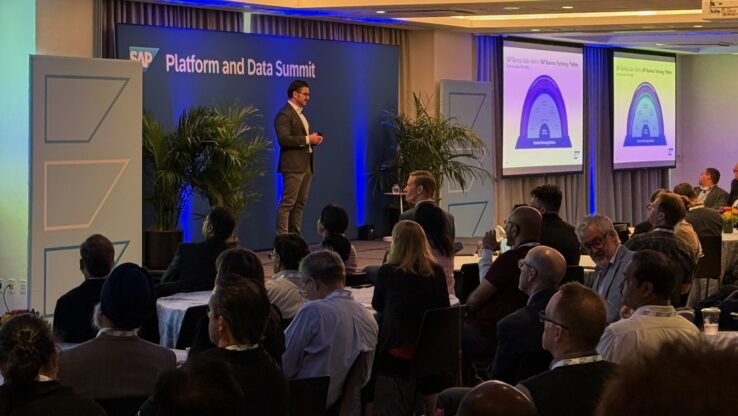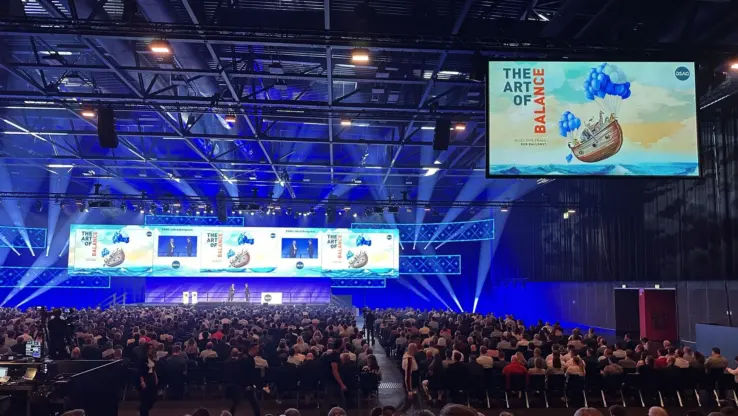
Unlocking Business Value Through SAP BTP: A Strategic Approach to Clean Core and Innovation
The concept of Clean Core establishes the best way for organizations to take advantage of SAP standard technology while simultaneously being able to innovate to meet business needs quickly. However, many organizations only know the term Clean Core in theory. In this blog post, Cody Wedl, President of sovanta America Inc. explains how to make Clean Core a reality using SAP BTP.
Legacy solution architecture and the way it’s shaped an organization often clouds situations and judgment. A team makes one exception, then another and with enough exceptions, the S/4 system begins to look like the ECC system left behind. This doesn’t happen because decision-makers and technical experts don’t know what they’re doing. It’s an error rooted in pre-Clean Core concepts and expectations that are now outdated.
Clean Core and SAP BTP
A S/4 HANA transformation is not a light topic. But while this juggernaut of an undertaking takes place, there is also a need for IT to act quickly to meet business needs while using standard, future-proof technology. Entering the SAP Business Technology Platform (BTP) to meet these challenges also requires a new thought process to succeed and to keep the core clean. To break from the old school of thought, customers must establish platform governance, develop standards, create active communication channels, and ensure transparency. In other words, customers need a BTP strategy, establishing a vision for the BTP, and linking how the BTP is managed to concrete business goals.
Establishing a BTP Center of Excellence Strategy (CoE)
There are many ways to develop a BTP Strategy, but we believe the BTP strategy should be developed by, executed by, and evaluated and revised by your BTP CoE. A BTP CoE is an internal organization that uses your BTP Strategy to build your new IT world, establishing “how things work” and “where things are going.” It covers high-level concepts like vision and platform objectives. It also establishes “how to do things” by developing and executing your BTP Operating Model. To turn Clean Core from a concept into a functional way to future-proof an enterprise, the BTPs Operating Model translates strategy into functions, roles, responsibilities, and processes. In this way, arriving at a Clean Core isn’t the result of periodic cleanups; it’s the sustainable product of an intentional strategy.
Decisions don’t need to be either-or. Many organizations have complex IT architectures. Establishing a BTP Strategy helps to make sure decisions are based on the goals of an organization, not legacy systems, and processes. A BTP CoE also helps here, documenting decisions and their justifications as part of establishing governance and standards – “what decisions have we made, and why?”.
Managing Governance for SAP BTP Services and Decision Making
The total volume of governance which must be established can be daunting. BTP already has 91 Services in the SAP Discovery Center, ranging from topics such as integration to UI adaptation. All of these Services are potentially beneficial for your organization, and they all have associated decisions with implications for your entire program and how you keep your core clean. A full decision tree can help organizations decide what to do based on their objectives, existing governance, and available resources. For example, decisions on whether to use RAP, CAP, or Kyma would fall under the governance established for application runtimes.
You don’t have to figure it out all at once, and you can cluster topics into larger buckets. For example, sovanta helps teams set priorities for developing these topics with a CoE Roadmap and organizes the BTP’s wide range capability into seven core topics such as “Platform Operations”. Inside each core topic, there’s subtopics, such as the “Account Model”, “Cost Controlling”, and “Demand Management”. Regardless of your approach, using the platform in a structured way helps get the results you want.
We must give SAP credit
SAP has considerably improved its standard offerings across the Lines of Business (via S/4 HANA) that customers should take advantage of. As customers maintain their standard, stable, and secure LoB process on the S/4 side, the SAP BTP provides the opportunity to innovate quickly to meet the needs of business. To get the most out of the BTP, we recommend creating a process for business to request innovation via the BTP CoE. In this way, innovation takes place within established governance, keeping the core clean – or if we realize governance isn’t sufficient or right, we revise governance, improving our overall BTP program.
The reason why Clean Core makes so much sense is from a cost controlling, finance, training, and enablement perspective. The point isn’t just to manage or eliminate custom code – it’s to future-proof your enterprise, lower cost of ownership, and enable innovation. Getting this right requires a strategy and a structured approach, enables you to meet demand, and truly gains you a competitive advantage. We look forward to hearing about your current process.




